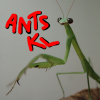1. Location (on a map) of collection:
2. Date of collection:
3. Habitat of collection:
4. Length (from head to gaster): 1,5 cm on average sometimes larger.
5. Color, hue, pattern and texture: Red thorax, red head, black tail and legs.
6. Distinguishing characteristics : Long legs and large jaw, often low in numbers but large size.
7. Distinguishing behavior: They run fast.
8. Nest description: Nest is usually located in rocky areas or sand.
9. Nuptial flight time and date: Uknown
Thanks a lot in advance, i would really appreciate your help, so i can learn more about this ant, as it looks really cool.
https://ibb.co/LJHVvTh
- Formiculture.com
- Forums
- Gallery
- Members
- Member Map
- Chat
















